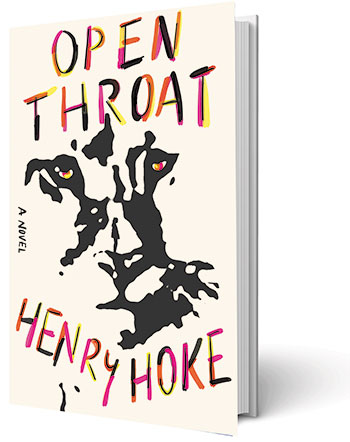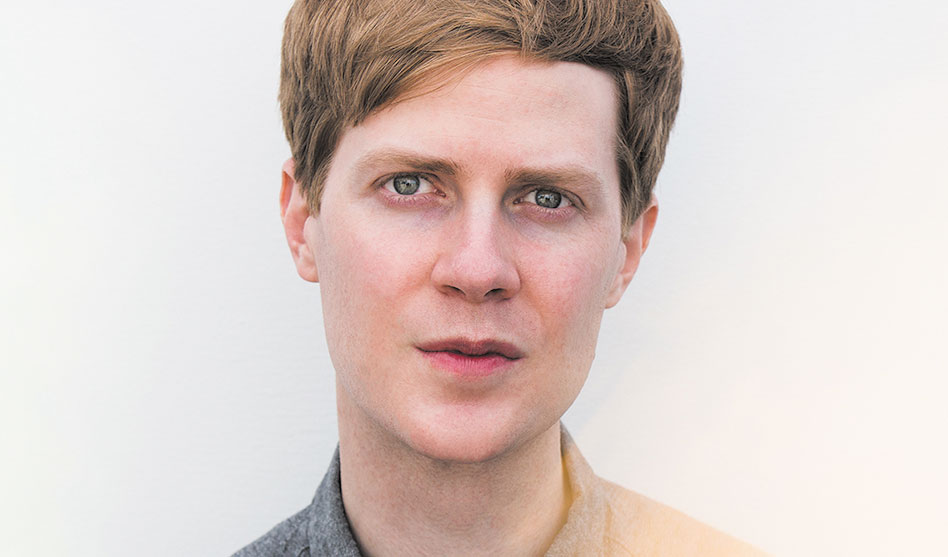Henry Hoke (Photo courtesy Myles Pettengill)
Author Henry Hoke takes a look at LA daily life, through the eyes of a queer mountain lion
GREGG SHAPIRO | Contributing Writer
GreggShapiro@aol.com
here’s no disputing that queer writer Henry Hoke has one of the most eclectic voices in contemporary literature. For example, the glue that held his 2022 memoir Stickers together was the adhesive of the back of the titular objects. And in Hoke’s new novel, Open Throat (MCD/FSG 2023), we see daily life in Los Angeles through the eyes of a queer mountain lion. Alternately surreal, sexy, serious and satisfying, Open Throat is a quick and insightful read.
Hoke recently made time in advance of his book tour to answer some questions.
Gregg Shapiro: During the pandemic lockdown, many elements of the natural world began to be present again, including animals returning to or flourishing in their natural habitats. Is Open Throat any way inspired by that? Henry Hoke: Yes, especially a reverie/vision of a human-free world that comes late in the book, and which I wrote post-pandemic, in the revision process with FSG. I’m also writing a short story called “The Dolphins Are Returning to the Gowanus Canal” riffing on this phenomenon/idea.
 Did you ever encounter a mountain lion when you lived in LA? I never did! But I always imagined one was lurking just out of sight on my hikes. It was oddly comforting.
Did you ever encounter a mountain lion when you lived in LA? I never did! But I always imagined one was lurking just out of sight on my hikes. It was oddly comforting.
I loved the way you depicted an earthquake through the mountain lion’s eyes. Did you experience an earthquake or earthquakes when you lived in California? Many! It was always surreal, to feel that loss of control, that strange warping of the physical order of the world, even for a moment. They become relatively commonplace when you’re in SoCal, but it’s always a bit of a reset to the day or night, a good moment to check in with friends and feel tied to a communal experience in such a vast city.
The mountain lion’s thought process is presented as a kind of punctuation-less stream of consciousness. Was this always the way you envisioned it? Always. It just felt right to flow with the words like that, to let my big cat’s monologue be uninterrupted and churning. The way my Word doc was formatted — with line breaks instead of any punctuation — is the way it looks in the finished book.
The mountain lion appears to be captivated by the sounds of human speech patterns, including the pronunciation of LA as “ellay,” and the phrase “This is not a big deal.” The mountain lion says, “I have so much language in my brain and nowhere to put it.” Is this a fascination and a feeling that you share? Absolutely. It’s why I’m an author, I’m always overwhelmed with observing and listening, taking the world in and processing it toward some future project. So much of the dialogue is verbatim from what I overheard on my walks through LA and its wildernesses.
You also include social and environmental issues, such as the homeless and the wildfires. Engagement with these issues emerged organically from the narrator and place I chose — the animal and Griffith Park — because the big cat’s everyday life happens in proximity to fire danger and a small community of unhoused park residents, consequences of the urbanization of wild spaces and the rampant inequality of Los Angeles.
Queerness is an additional presence — from the gay poet “boy kid” holding hands with his boyfriend to the two men the mountain lion watches having sex in the cave. I wanted to punctuate the lion’s queer internal journey — a larger arc of oppressed sexuality, loss, and gender affirmation — with exposure to queer humans, however fleetingly, to help my narrator make sense, to see gayness as “a natural part of this world.”
There is also unexpected humor in the book. Was it important to you to include that in the storytelling? I can’t really avoid it! Especially with the concepts I follow into book-length works, the wild and uncanny perspectives, humor always emerges to break up the more philosophical, painful and poetic. I always appreciate comic relief in darker works.
The novel’s title, Open Throat, comes from the last chapter. Did the book have a working title before that? I had only been writing the book for a week when the title emerged from my subconscious — delivered to me by Anthony Bourdain in a dream. I prefer to have a title when I write, to imagine the work as a finished book, so I can ride that confidence through the long crafting and revision process.
On page 139, a human recognizes the mountain lion as P-22, the one that “lives in the park,” leading the mountain line to ponder, “Is this fame?” P-22 was the inspiration, and I’m not sure that my cat is truly P-22, but I wanted to play with that idea of a “famous” but reclusive cat’s confusion at being known, when in fact its life is so isolated and perilous. Fame always seems so disorienting, and the way people project onto the figures they deify, especially one as unknowable as a wild animal, never lines up for me.
Disney, referred to by the mountain lion as “diznee,” made me wonder if you could imagine a movie version of Open Throat. I wrote this book, like all my books, to be unfilmable. But I’m not against a transformation for the screen. A girl, like a mountain lion, has got to eat [laughs].

